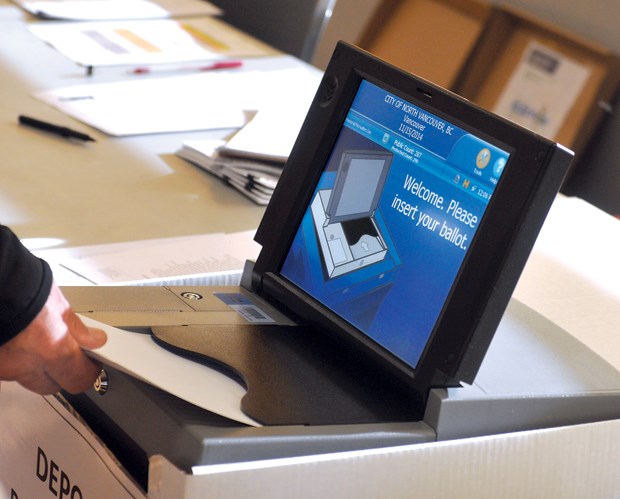Voter turnout on the North Shore inched upwards in Saturday's municipal elections, but still failed to crack a third of those eligible, continuing a trend of more people voting with their butts than with their ballots.
The good news, however, is that more people are voting than did in the last civic election.
In the City of North Vancouver, where incumbent Mayor Darrell Mussatto successfully faced down challengers Kerry Morris and George Pringle, voter turnout was highest, with 10,567 citizens - 28 per cent of estimated eligible voters - or 31 per cent of registered voters - showing up to the polls.
Those figures are up from the last election when just 21 per cent of voters showed up to vote.
In West Vancouver, 8,562 people cast ballots - making up about 27 per cent of estimated eligible voters or 28.34 per cent of registered voters.
That number is also up from 2011, when 24 per cent of voters cast ballots, but still down from a high of 41 per cent in 1999.
In the District of North Vancouver, 14,709 people voted - making up about 23 per cent of eligible voters or 24.7 per cent of registered voters. That figure was up from 2011 when voter turnout was 21 per cent and from 2008, when only 17 per cent of citizens bothered to mark a ballot.
"The trend line is more people did vote," said Patrick Smith, a professor of political science at Simon Fraser University. Still, voter turnout levels that hover between 20 and 30 per cent are nothing to crow about, he said, adding B.C.'s civic participation rates are "among the lowest in Canada." When participation rates dip to around 20 per cent, "It's democratically dangerous," he added.
A hard-fought mayoralty battle such as the one that took place in the City of North Vancouver tends to push voter turnout up, he said. "It's something people can wrap their heads around."
Without ward systems, formal political parties or slates on the North Shore, it's often difficult for voters to choose between large numbers of candidates, said Smith - which is one reason for low turnout.
In small towns where people know each other, turnout is often higher.
"On Bowen Island, you don't need to worry about parties. Everyone knows there's Joe and he's with the Chamber of Commerce and there's Jane and she's with the labour council."
Tight races also tend to attract voters because they think their vote will count.
Preliminary results from CivicInfo B.C. had voter turnout around the province up to about 33 per cent - an increase over the approximately 29 per cent who voted in 2011.
But juxtaposed with examples like the Hong Kong students who recently mounted protests in the streets over the right to vote in democratic elections, turnout is poor, noted Smith.
A recent study by Elections B.C. that looked at declining voter turnout found older people are much more likely to vote than young people. The study also found neighbourhoods with higher median incomes and a greater proportion of university-educated citizens are more likely to vote. Neighbourhoods with high proportions of people who recently moved into the area, high unemployment rates or people who aren't in the workforce with kids at home are more likely not to cast a ballot.



